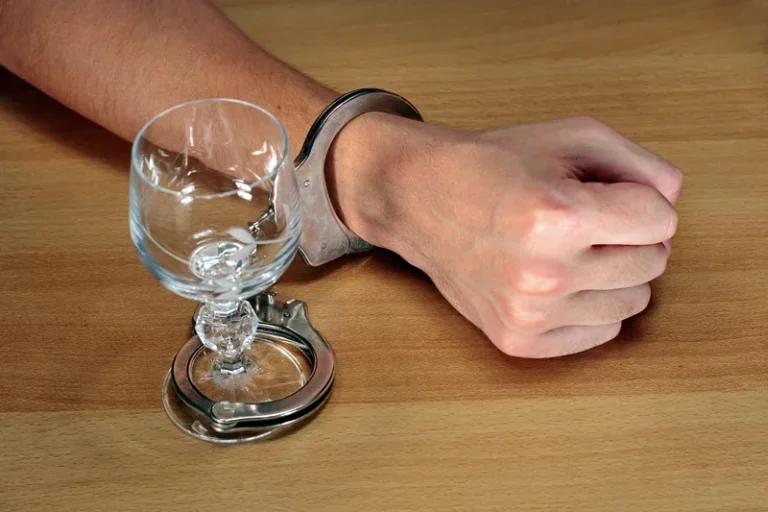Abstinence Not Required: Expanding the Definition of Recovery from Alcohol Use Disorder PMC

If intention-to-treat results were not available, we used reported results for completers. A similar approach was used for dropouts, defined as the number of patients who withdrew from the study at reported time points. In line with the AA (1939) seminal definition, recent definitions of recovery, including a working definition from SAMHSA (2011), have focused on the importance of functioning, including a common concern with general well-being in defining recovery. The AUD symptoms of DSM-5 are certainly relevant for determining functioning related to alcohol use, but neither the DSM-5 nor consumption-based criteria provide specific information about general or physical well-being, social or occupational functioning, or quality of life. DSM-5 and consumption-based criteria also do not provide any utility in measuring the cognitions, attitudes, beliefs, and lifestyle factors that are critically important in predicting long term recovery (Kelly et al., 2019; Moos and Moos, 2007).
- Instead, paststudies have equated “recovery” with DSM-IV diagnostic criteria and nationalguidelines for low-risk drinking; these criteria may exclude people who considerthemselves “in recovery.” For example, individuals involved in harmreduction techniques that do not involve changed drinking may consider themselves inrecovery.
- Several recent studies have evaluated long-term functioning outcomes among individuals classified as low risk drinkers following treatment, yet there have been two primary limitations of this prior work.
- The rationale and methods of the COMBINE study have been described in detail elsewhere (aCOMBINE Study Research Group, 2003a, COMBINE Study Research Group, 2003b).
- Your thoughts, feelings, and behaviours all play a role in how you manage your alcohol consumption.
Risk of bias assessment
The ultimate goal of CBT is to provide the skills that can prevent a relapse and maintain drinking goals, whether they be abstinence or controlled drinking (Marlatt & Gordon, 1985; Marlatt & Witkiewitz, 2005). A recent meta-analysis of CBT for substance use disorders found support for a modest benefit of CBT over treatment as usual (Magill & Ray, 2009). Furthermore, one report using a trajectory analysis of the COMBINE study data found the Combined Behavioral Intervention (CBI), which is principally grounded in CBT, to reduce the risk of being in an “increasing to nearly daily drinking” trajectory. This study suggests that CBI may help participants control their drinking as opposed to simply encouraging abstinence (Gueorguieva et al., 2010). However, no studies to date have assessed the moderating role of drinking goal on CBI efficacy.
Network Geometry and Synthesis of Results

This disease is not a choice, so believing you can control it when you have an addiction can be dangerous and naive. There is no “one size fits all” approach to changing your relationship with alcohol, and all pathways are unique. One person may start out with a moderation goal and later decide that a sober lifestyle more closely supports their aspirations and wellness. Another individual may pursue sobriety and later decide that they want to try to drink in moderation once they’ve clarified their boundaries. The analytical strategy for the present study was consistent with the primary COMBINE report (Anton et al., 2006). Thus, PDA was tested using a mixed effects general linear model (PROC MIXED), relapse and DPDD were tested using a proportional hazards model (PROC PHREG), and GCO was analyzed using a logistic regression model (PROC LOGISTIC)1.

Reflect on the alcohol use disorder criteria

Diagnostic schemes instead emphasize drinking in harmful ways and under conditions that increase risk for adverse consequences in alcohol-related functioning and development of tolerance and physical dependence. The 4+/5+ consumption cutpoints were originally developed to screen for AUD risk in general and medical populations, and incorporating them into definitions of recovery, particularly as superordinate evidence of recovery, is a newer development of unproven scientific and clinical utility. Given data demonstrating a clear link between abstinence goals and treatment engagement in a primarily abstinence-based SUD treatment system, it is reasonable to hypothesize that offering nonabstinence treatment would increase overall engagement by appealing to those with nonabstinence goals. Indeed, there is anecdotal evidence that this may be the case; for example, a qualitative study of nonabstinence drug treatment in Denmark described a client saying that he would not have presented to abstinence-only treatment due to his goal of moderate use (Järvinen, 2017). Additionally, in the United Kingdom, where there is greater access to nonabstinence treatment (Rosenberg & Melville, 2005; Rosenberg & Phillips, 2003), the proportion of individuals with opioid use disorder engaged in treatment is more than twice that of the U.S. (60% vs. 28%; Burkinshaw et al., 2017). It is important to highlight that most of the studies cited above did not provide goal-matched treatment; thus, these outcomes generally reflect differences between individuals with abstinence vs. non-abstinence goals who participated in abstinence-based AUD treatment.
How do you decide between sobriety or moderation?

Most people who seek out moderation management (MM) have already tried and been unsuccessful at stopping drinking or cutting down on their use. Polich, Armor, and Braiker found that the most severely dependent alcoholics (11 or more dependence symptoms on admission) were the least likely to achieve nonproblem drinking at 4 years. However, a quarter or this group who achieved remission did so through nonproblem drinking.

Small-Study Effects
Studies excluded due to missing data were discussed with regard to their main characteristics to exclude possible biases. However, the extent of their problems according to ICD-10 (International Statistical Classification of Diseases alcohol abstinence vs moderation and Related Health Problems, 10th edition) or DSM 5 (Diagnostic and Statistical Manual of mental disorders, 5th edition) was not measured. Thus, there might be individuals in the sample who do not consider SUD as their main problem.
Risk of bias within included studies
All the interviewed clients reported a successful treatment outcome, i.e. total abstinence six months after treatment. The aim is to investigate how these clients view abstinence and the role of AA[1] in their recovery process during the past five years. There are heterogeneous views on the possibilities of CD after recovery from substance use disorder both in research and in treatment systems. This study on client views on abstinence versus CD after treatment advocating total abstinence can contribute with perspectives on this ongoing discussion.
2. Established treatment models compatible with nonabstinence goals
- To reflect current clinical practice, we sought only studies that provided detoxification to participants, as well as studies that recruited participants who had undergone detoxification less than four weeks before randomisation.
- With this as a starting point, the IP was asked to describe the past five years in terms of potential so-called relapse and retention and/or resumption of positive change.
- Furthermore, it should be noted that the literature does not offer consensus on the operational definition of drinking goal (Luquiens et al., 2011).
- At Monument, you can meet with a physician, such as myself, to discuss if medication to stop drinking is appropriate for you.
Analysis accommodated the clustering of observations by site through the estimation of a random intercept term. Additionally, we offer exceptional continuing care so even after completing your programme; you’re never alone in this fight against alcohol addiction. Whether it’s through continued counselling or group meetings within the community -we’ll be there every step of the way- supporting you as much as needed so that recovery becomes less daunting and more hopeful. When it comes to choosing between total abstinence or limiting your intake, the answer isn’t black and white. Several factors influence this decision, including societal perception, cultural factors, psychological impact, and health implications. You may feel pressured by society’s view of what is acceptable drinking behaviour or fear being ostracised due to cultural norms surrounding alcohol use.
Take Our Substance Use Self-Assessment
As the IP had a successful outcome, six months after treatment, their possibilities for CD might be better than for persons with SUD in general. On the other hand, as the group expressed positive views on this specific treatment, they might question the sobriety goal in a lesser extent than other groups. Some of the abstainers reported experience of professional contacts, such as therapists or psychologists. These contacts had often complemented the support from AA but in some cases also complicated it as the IPs found that their previous SUD was related to other things that were not in line with the approach to addiction as a disease (e.g. IP19). After transcribing the interviews, the material was analysed thematically (Braun and Clarke, 2006) by coding the interview passages according to what was brought up both manually and by using NVivo (a software package for qualitative data analysis).
This finding supplements the numerous studies that identify lack of readiness for abstinence as the top reason for non-engagement in SUD treatment, even among those who recognize a need for treatment (e.g., Chen, Strain, Crum, & Mojtabai, 2013; SAMHSA, 2019a). There has been little research on the goals of non-treatment-seeking individuals; however, research suggests that nonabstinence goals are common even among https://ecosoberhouse.com/ individuals presenting to SUD treatment. Among those seeking treatment for alcohol use disorder (AUD), studies with large samples have cited rates of nonabstinence goals ranging from 17% (Berglund et al., 2019) to 87% (Enggasser et al., 2015). In Europe, about half (44–46%) of individuals seeking treatment for AUD have non-abstinence goals (Haug & Schaub, 2016; Heather, Adamson, Raistrick, & Slegg, 2010).